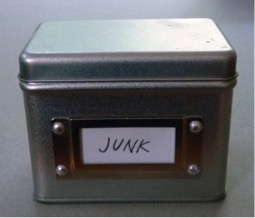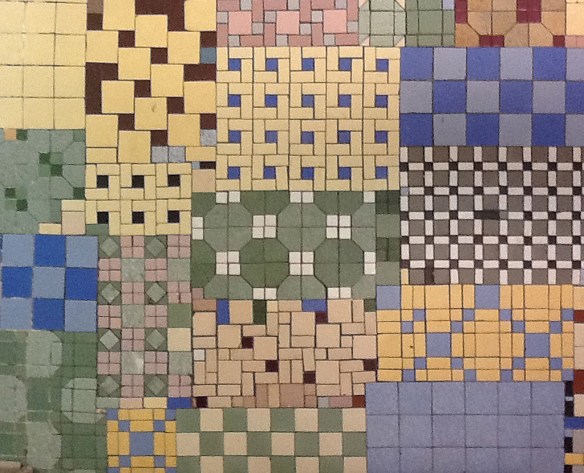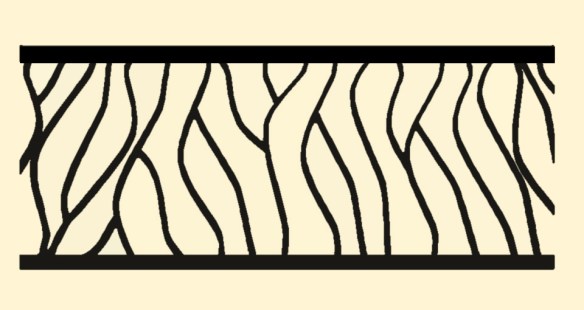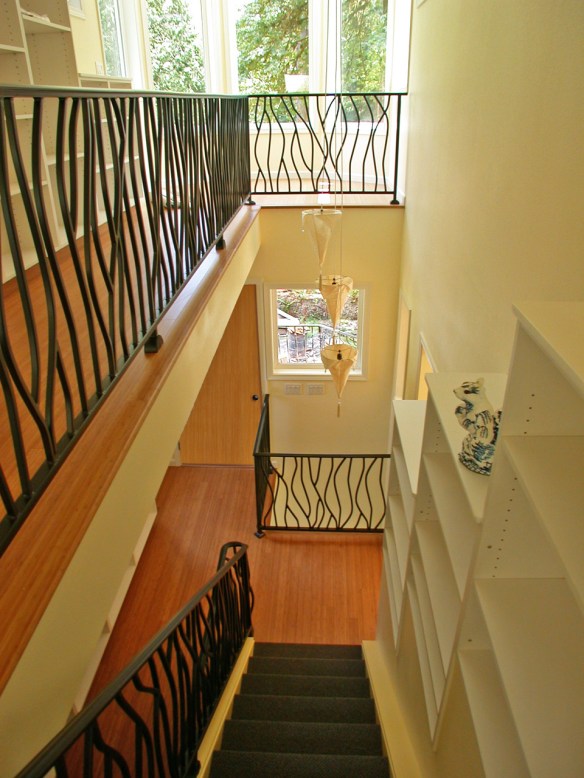“Have nothing in your house that you do not know to be useful, or believe to be beautiful”. —William Morris
Every member of every household has at least one special stash of Junk. It might be a drawer, a box, or a room. I have a Junk Box.
The contents of this box have been with me for many years, some since childhood. Inside of I find another box- a Russian painted oval filled with bracelet charms and a lapel pin. Along with it is an assortment of oddities, such as a miniature Etch-a-sketch, two petrified mini-pancakes from Amsterdam, and a penny minted in the city and year of my birth.

The mementos are not Junk, because they ARE, in fact, useful, as prods to my memory. To me, they are dense with personal meaning, and as such, are beautiful to me. Maybe I should re-label the box “Treasures.”

My Junk Drawer brims with a collection of things that are useful for certain needs, yet don’t fall easily into categories, so they don’t belong anywhere else. Among other things jumbled together in the top right drawer of my kitchen, I have scissors, empty CD cases, and an envelope of Euros . A drawer of uncategorizable things, not beautiful, but because they are useful, not Junk.
There is a way-station in my garage which holds a small tower of items I plan to give away, recycle, or sell on Craigslist. They are no longer useful to me, but they will have use for someone else. This, therefore, is not a Junk Pile.
I think my only true Junk is stuff that I think is no longer reasonably useful to anyone. After careful consideration, I’m enthusiastic about clearing out useless stuff. It goes in the trash. It makes me feel a little lighter and less encumbered.
All images belong to Laura Kraft-Architect. Feel free to share any of these images, but please provide a link back to 2H Pencil. Thanks.








